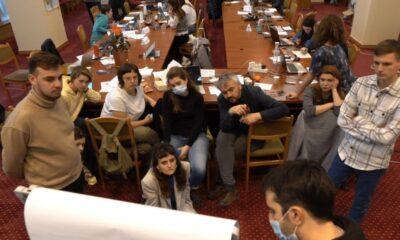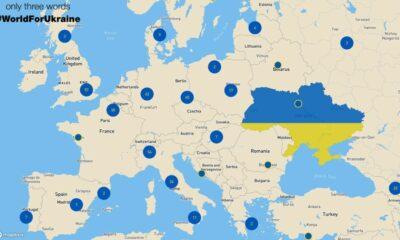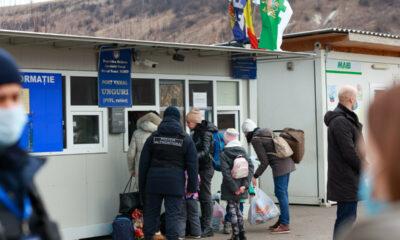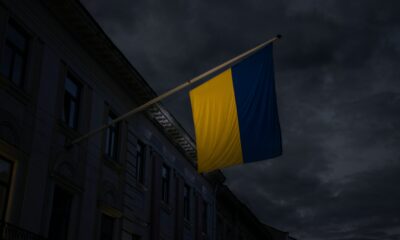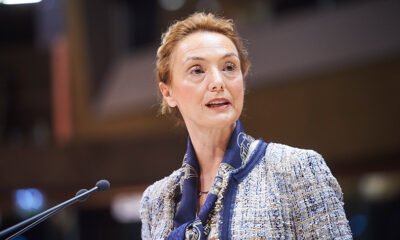Economy
Gazprom dominates Russian political power making
Reading Time: 4 minutesIn 2003 a team of Russian foreign policy and energy experts wrote a 70 page memo about the role of Gazprom, the state-owned gas monopoly, in Russia’s domestic politics and the country’s foreign policy strategy. The document was distributed to a limited number of consumers and was never published. It is in the possession of the Jamestown Foundation.
By Roman Kupchinsky
In 2003 a team of Russian foreign policy and energy experts wrote a 70 page memo about the role of Gazprom, the state-owned gas monopoly, in Russia’s domestic politics and the country’s foreign policy strategy. The document was distributed to a limited number of consumers and was never published. It is in the possession of the Jamestown Foundation.
The findings in the memo remain relevant to this day for they touch upon the very nature of political power in Russia –the nexus between Russia’s vast gas resources and the rulers in the Kremlin. The memo was written at a time when a considerable debate was taking place among high ranking Russian officials as to whether to break up Gazprom into a number of independent companies and create a liberalized Russian gas market or keep Gazprom as a monolithic giant.
But the underpinning of the debate was about political power in Russia. Everyone involved in the debate understood the cardinal rule which dictated political life in post-Soviet Russia – who controlled Gazprom controlled Russia.
Support for breaking up Gazprom, according to the memo, was spearheaded by a group of former President Boris Yeltsin’s top liberal advisors, who at the time were powerful officials in the Russian Ministry of Economic Development. This group appeared concerned that the new Russian President Vladimir Putin was tying his political career and Russian foreign policy too closely to Gazprom and the company’s new group of managers led by Alexei Miller whom he had placed in power. Once Miller had consolidated the power given to him by Putin, this group of liberals were ousted from the ministry and power shifted to the Putin group.
Miller, according to the authors of the memo, was seen by the former liberal group as an incompetent manager with no experience in the gas business and his new associates were regarded as men from the siloviki faction, in other words loyal Putin supporters from the Federal Security Service (FSB) and the Main Intelligence Directorate of the General Staff (GRU) who were pledged (and handsomely paid) to defend and strengthen Gazprom as a vertically integrated structure; working to promote Putin and his political agenda for restoring Russia as a world power, a goal they all shared.
The memo states that the new Putin team at the Ministry of Economic Development decreed that:
“The right to sell gas to Europe will not be granted to independent producers since this could lead to competition between suppliers and will result in lower prices. The sole export channel will remain ‘Gazexport’ [a fully owned subsidiary of Gazprom now known as Gazprom Export-RK].”
Maintaining the sole export channel for Russian gas is mandatory not only for economic, but also for political needs. The fact is that the Russian authorities often use “gas diplomacy.” If one or another country begins to differ with Moscow on important matters, the volume of Russian gas to that country is decreased.
“If, however, the leaders of this or that country decide to show good will towards the Russian Federation, then the situation with gas deliveries, pricing policy and former debts changes on a far more favorable note to the buyer,” the memo continued.
The authors of the memo point out that with Miller’s ascendency to Gazprom CEO, “the gas monopoly will ensure the financing of Putin’s political projects.” They also point out that the former Gazprom Chairman Rem Vyakherev insisted on maintaining control over Gazprom sponsored companies such as Itera, Sibur, Stroytransgaz and Regiongazholdings. Miller, with the support of the power ministries, rapidly managed to return these assets to Gazprom and thereby please his mentor-Putin. This not only enhanced Gazprom’s assets, it also gave Putin a more powerful financial base on which to rely.
The other major battle at that time involved Russia’s oil companies and their relationship to Gazprom. “The group of St. Petersburg Siloviki,” according to the memo, “cleared the field of all attempts to grab control of the economy…All the major enterprises belonging to the state came under their control.”
At that time, the pro-Putin group began actively supporting the then-minor oil company Rosneft, which began receiving preferential terms from Russia’s SberBank and soon went on to represent Russian interests in oil-related projects in Kazakhstan. Eventually, Rosneft came under the control of Igor Sechin, one of Putin’s most trusted advisors and currently a deputy prime minister and through Sechin’s efforts he was able to confiscate from the Yukos oil company a major part of its assets after the arrest of its owner Mikhail Khodorkovsky.
At this time other Russian oil companies were hoping to gain access to Gazprom’s pipeline system along with the right to export their own gas. This however, has not materialized to this day. The Russian domestic gas market, which is fully controlled by Gazprom’s ownership of all trunk pipelines and most of the low-pressure local distribution pipelines, allows the gas monopoly to control gas sales by oil companies, a situation which continues to be a major point of conflict between Putin and the few remaining independent Russian oil companies.
“This [Gazprom’s control over the pipelines] gives Putin a major edge over domestic and foreign policy. The president, thanks to Gazprom, is able to exert pressure on oil companies and on regional leaders,” according to the authors of the memo.
In today’s emerging competition for political power in Russia between President Dmitry Medvedev and Putin, the key element remains the same as it was in 2003 –control over Gazprom and its elaborate system of domination over both the export of gas and its control of domestic gas distribution (Jamestown Blog on Russia and Eurasia, September 8).
Putin has placed his cards on the table by declaring that only Gazprom will be allowed to export gas abroad for the foreseeable future. While Medvedev is not opposed to this in principle, he obliquely persists in questioning Putin’s handling of Gazprom’s long-term strategy and appears to be playing off the contradictions between the oil companies’ demands and Putin’s trump card, Gazprom, in what seems to be a major power struggle. Ultimately this is not based on ideological differences over such mundane matters as democracy in Russia, but on a savage no-holds-barred fight for assets and power over who will control Gazprom in the long term.
Economy
Moldova will receive a disbursement of 36 million euros as part of the the Economic Recovery Plan
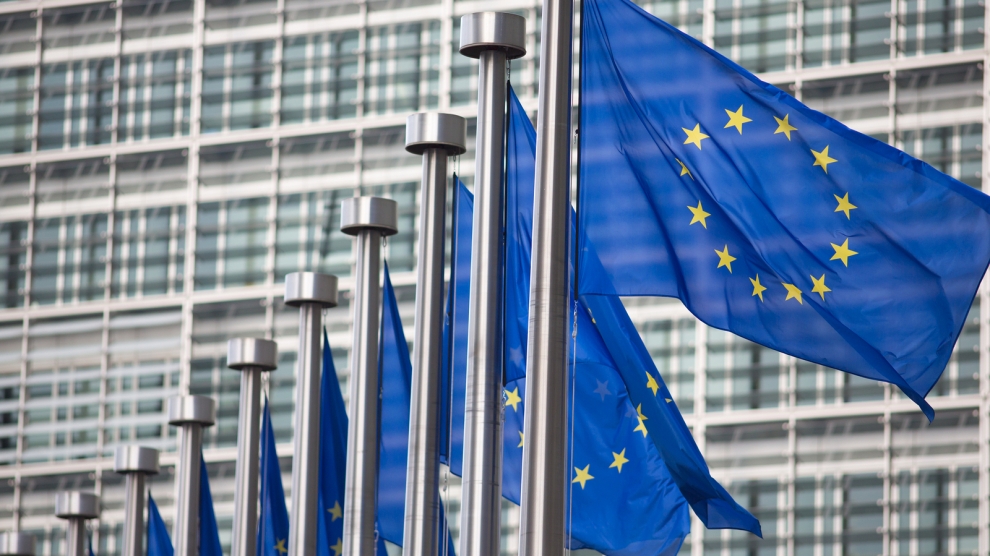
This week, the European Commission approved the disbursement of 36 million euros in grant money for the Republic of Moldova. The announcement was made by Deputy Director-General for Neighbourhood Policy and Enlargement Negotiations at the European Commission, Katarina Mathernova, who paid an official visit to the Republic of Moldova between September 13-15, together with Managing Director for Russia, Eastern Partnership, Central Asia, Regional cooperation and OSCE, at the European External Action Service, Michael Siebert.
The EU officials had meetings with President Maia Sandu, Minister of Foreign Affairs and European Integration, Nicu Popescu, Speaker of Parliament, Igor Grosu, Prime Minister of the country, Natalia Gavrilita, as well as key representatives of Government, international financial institutions and the civil society, according to a press release issued by the Delegation of the European Union to the Republic of Moldova.
Beside such topics as the EU-Moldova relations and prospects, the priorities of the reform agenda of the new Moldovan Government, preparations for the Eastern Partnership Summit at the end of the year and the Transnistrian conflict settlement, the officials also discussed the EU assistance in support of reforms and the Economic Recovery Plan for Moldova, which was announced in June with a total EU support of 600 million euros over the next 3 years.
“The first measures under the Economic Recovery Plan will shortly materialize, with the expected disbursement of 36 million euros in grant money under budget support programmes to support the authorities’ efforts to fight against the consequences of the pandemic. Moldova can count on EU’s assistance on its path to reforms and to recovery, bringing tangible results to citizens,” Katarina Mathernova stated.
The plan is based on assistance provided by the European Union through various bilateral and regional instruments, aiming to mobilize the funds in the form of grants, loans, guarantees and macro-financial assistance.
“The Economic Recovery Plan for the Republic of Moldova involves much more, not just this financial support provided immediately. It must help digital transformation, strengthen infrastructure, energy efficiency, education and support small and medium-sized enterprises,” the EU official also said.
As Prime Minister Natalia Gavrilita informed, “The Economic Recovery Plan and the 5 flagship initiatives for Moldova in the Eastern Partnership will directly contribute to the reform and consolidation of institutions, stimulate long-term socio-economic development, bring direct benefits to citizens, and unleash new economic opportunities through promoting the green agenda and digitization. Small and medium-sized enterprises (SMEs) have been hit hard by the crisis. Promoting and diversifying access to finance and reducing collateral requirements will be essential in supporting economic operators. We are grateful to the EU partners who will launch two programs to support 50 000 independent Moldovan SMEs to adapt to the new conditions.”
President of the Republic of Moldova, Maia Sandu, welcomed the decision of the European Union to disburse about 745 million lei in grant money, as the official page of the President’s Office announced. “EU support comes after a long period of freezing of European assistance, caused by former governments. We managed to relaunch the political dialogue with the European Union and resume financial assistance. The Republic of Moldova is gradually regaining the trust of its strategic partners. This European support is also a signal of encouragement for the new Government team in its commitment to clean up the institutions, fight corruption and launch development programs in the country,” said Maia Sandu.
Photo: unknown
Economy
Romania and Moldova signed a partnership memorandum pledging to cooperate in promoting their wines
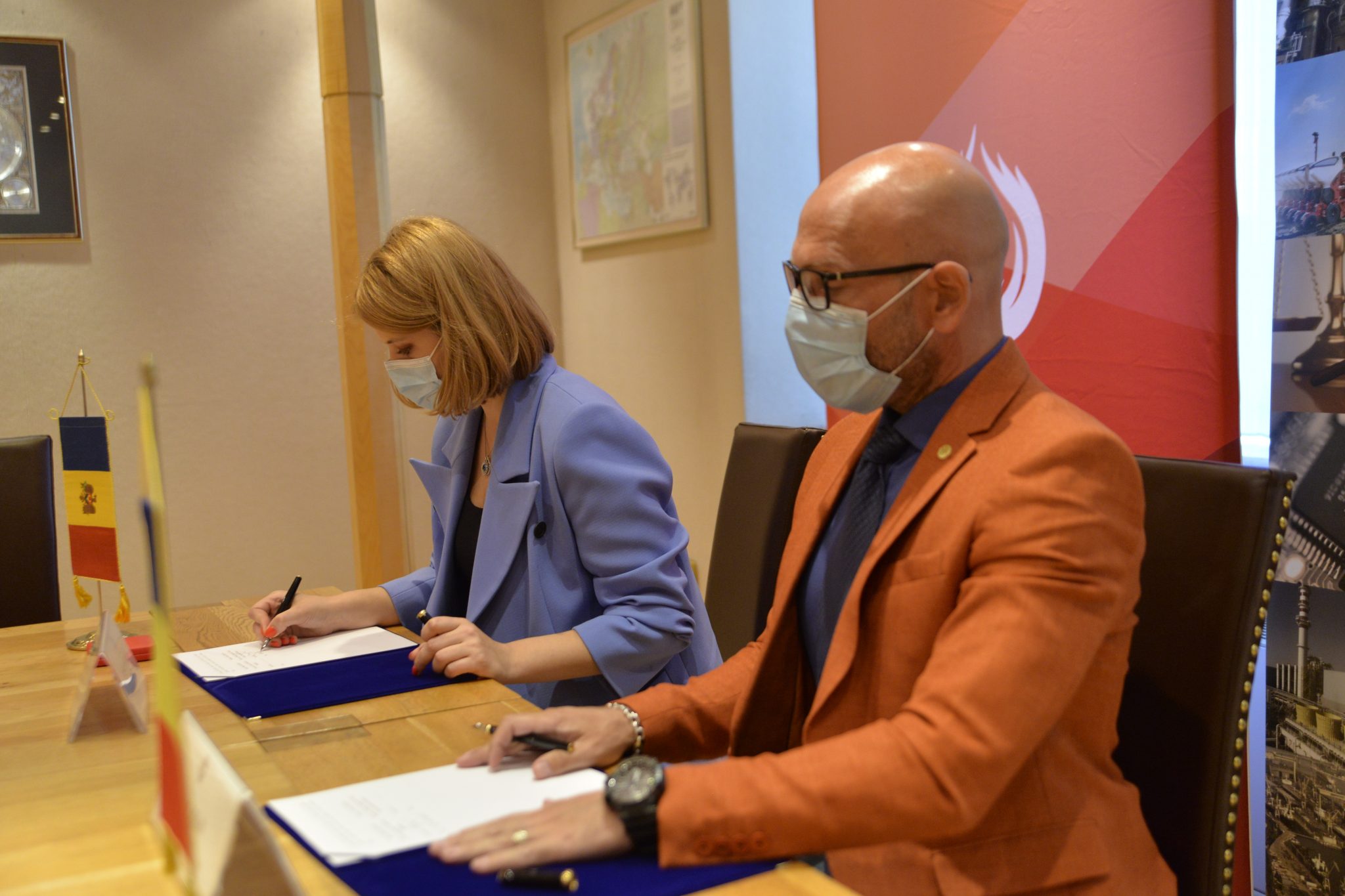
The Chamber of Commerce and Industry of Romania (CCIR) and the National Office for Vine and Wine (NOVW) of the Republic of Moldova signed, last week, a memorandum of cooperation on organizing joint promotional activities in the markets of common interest, as the CCIR announced.
China, Japan or the USA are just some of the markets targeted by the Romanian and Moldovan institutions. The memorandum also involves advertising activities for wines from common indigenous varieties, promoting the oeno-tourist region, developing a tourist route in the two states, exchange of experience, study visits, and mutual support in identifying new export opportunities. “We are very confident that this collaboration between our organizations will lead to sustainable economic growth and a higher degree of well-being among Moldovans and Romanians,” claimed Deputy Secretary-General of CCIR, Bogdan Visan.
On the other hand, Director of the NOVW, Cristina Frolov, declared that no open competition with Romania is aimed at the governmental level of the Republic of Moldova. “This request for collaboration is a consequence of the partnership principle. Romania imports 10-12% of the wine it consumes, and we want to take more from this import quota. Every year, the Romanian market grows by approximately 2.8%, as it happened in 2020, and we are interested in taking a maximum share of this percentage of imported wines without entering into direct competition with the Romanian producer,” the Moldovan official said. She also mentioned that Moldova aims at increasing the market share of wine production by at least 50% compared to 2020, and the number of producers present on the Romanian market – by at least 40%.
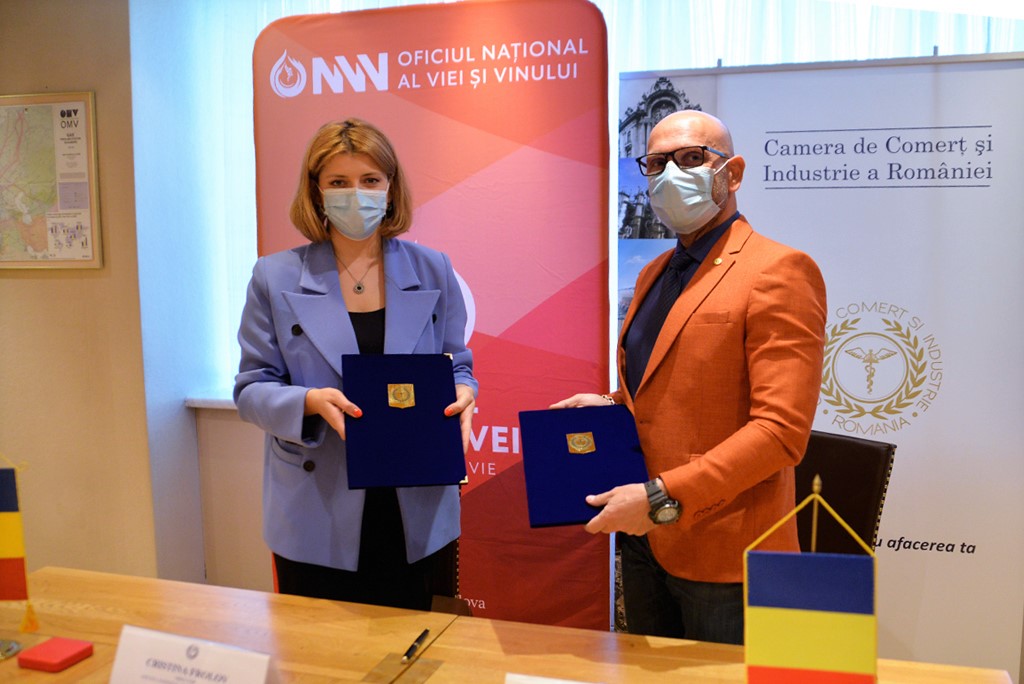
Source: ccir.ro
**
According to the data of the Romanian National Trade Register Office, the total value of Romania-Moldova trade was 1.7 billion euros at the end of last year and over 805 million euros at the end of May 2021. In July 2021, there were 6 522 companies from the Republic of Moldova in Romania, with a total capital value of 45.9 million euros.
The data of Moldova’s National Office of Vine and Wine showed that, in the first 7 months of 2021, the total quantity of bottled wine was about 27 million litres (registering an increase of 10% as compared to the same period last year), with a value of more than one billion lei, which is 32% more than the same period last year. Moldovan wines were awarded 956 medals at 32 international competitions in 2020.
Photo: ccir.ro
Economy
Moldova’s hope to be a top walnut exporter and its main difficulties
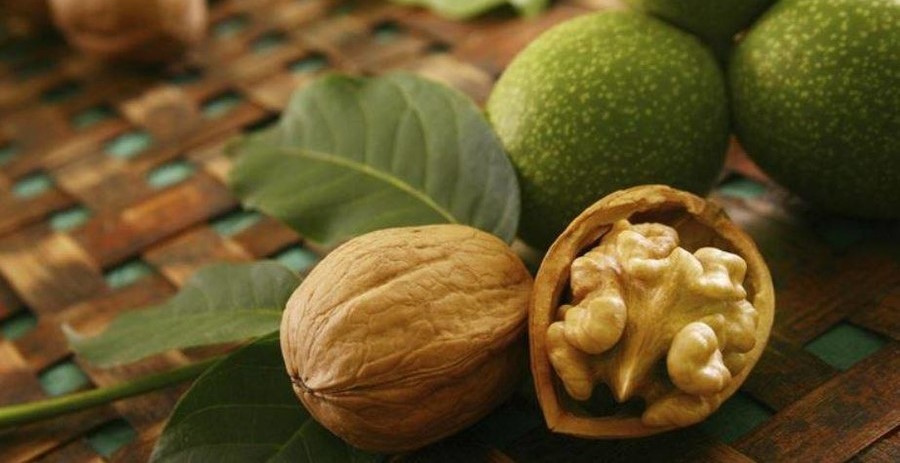
The Republic of Moldova has perfect weather conditions for growing walnut trees, that creating a great potential of walnut production and trade, especially on international markets, where the demand is way higher than the product’s supply. National and international experts believe that the country’s walnut production industry is on the verge of important transformations, which could lead to increased yields, quality and competitiveness worldwide.
According to authorities, Moldova exports 34-35 thousand tons of walnuts in shell, which is about 7% of the total export of fruit and 5% of the total export of horticultural products. The export value is assessed as being $120 million, that being 57-60% of the total fruit export value and about 50% of horticultural export value. Most of walnut crops are exported to the EU countries, such as France, Germany, the Netherlands, Romania and Austria. The country’s exports were among the world’s top 10 when it comes to the highest dollar value of the product during 2020.
Viorel Gherciu, Minister of Agriculture and Food Industry, pointed out that the production in the domestic walnut industry has increased by 55% in the last five years, which ranks Moldova among the main producers in the world.
“The biggest opportunity for this industry is that we are in the geographical proximity of the largest walnut import area in the world, which is the European Union, with almost 40% of total imports in the world. We are on the EU border, with privileged relations, with an Association Agreement. We already enjoy a good relationship in working with European importers, they trust our processors. A very close collaboration has been created and this is, in fact, the guarantee for those who invest in the area,” claimed the president of the Walnut Producers Association, Oleg Tirsina.
The data provided by the National Bureau of Statistics show that there are 34.7 thousand hectares of walnut plantations in the country. 20.90 hectares are represented by orchards. 75% of planted orchards are formed of old varieties trees. 30-35% of the exported production comes from orchards, the rest comes from individual farmers and plantations along the roads. This means that the quality of walnut production is not at its maximum potential. Developing commercial plantations through orchards modernization and extension of walnut varieties would provide double yield and better quality, experts say.
Governmental support in the form of subsidizing solutions, foreign investments and credit options are indispensable for the industry development. One of the financing options is the credit line of the European Investment Bank Project. Since 2016, 15 producers and processors of nuts, almonds and hazelnuts have benefited from these loans with the total amount of investments worth 8.7 million euros. A further extension of the project would provide another 60 million euros for the modernization of the horticultural sector in general and for harvesting organic walnuts in particular.
Photo: heymoldova.com


